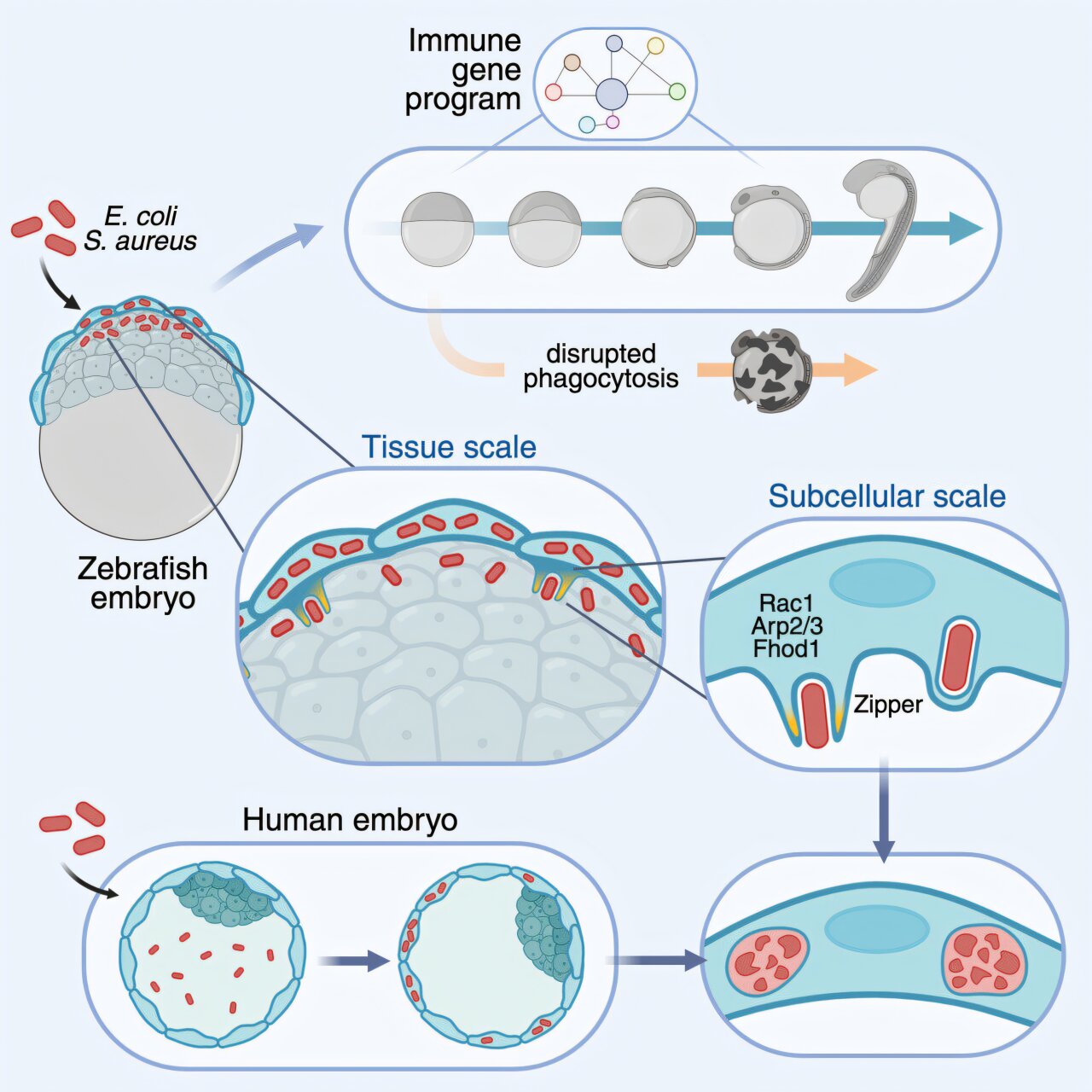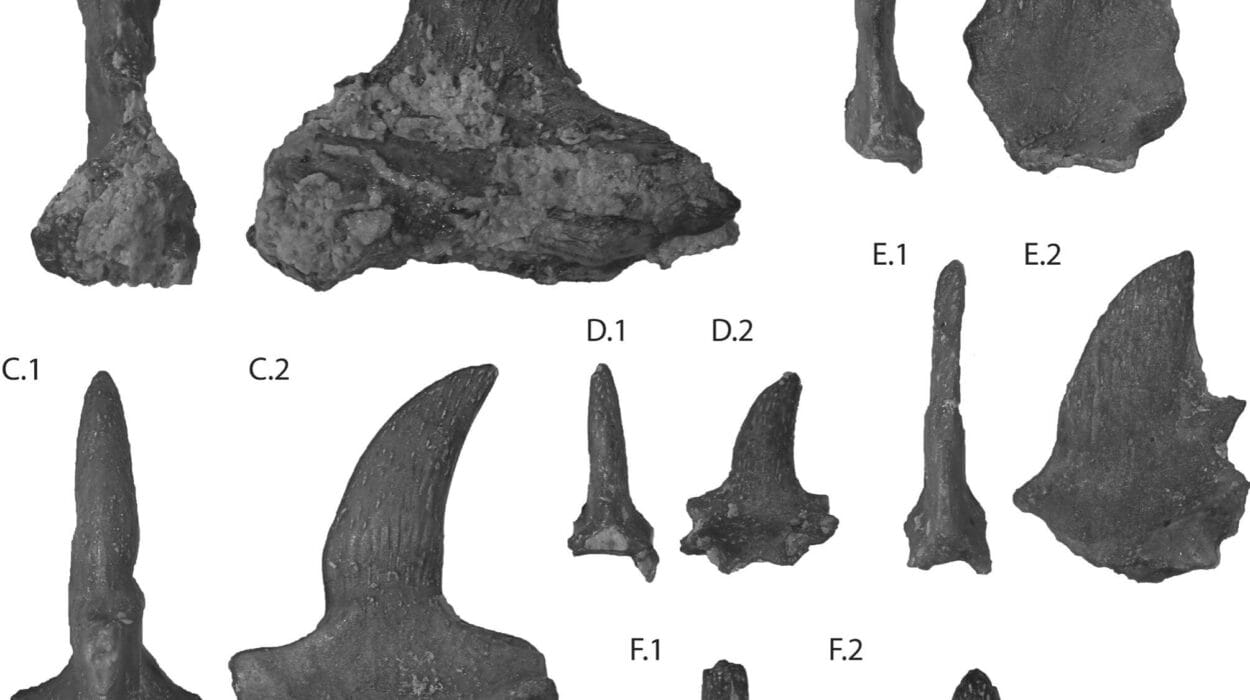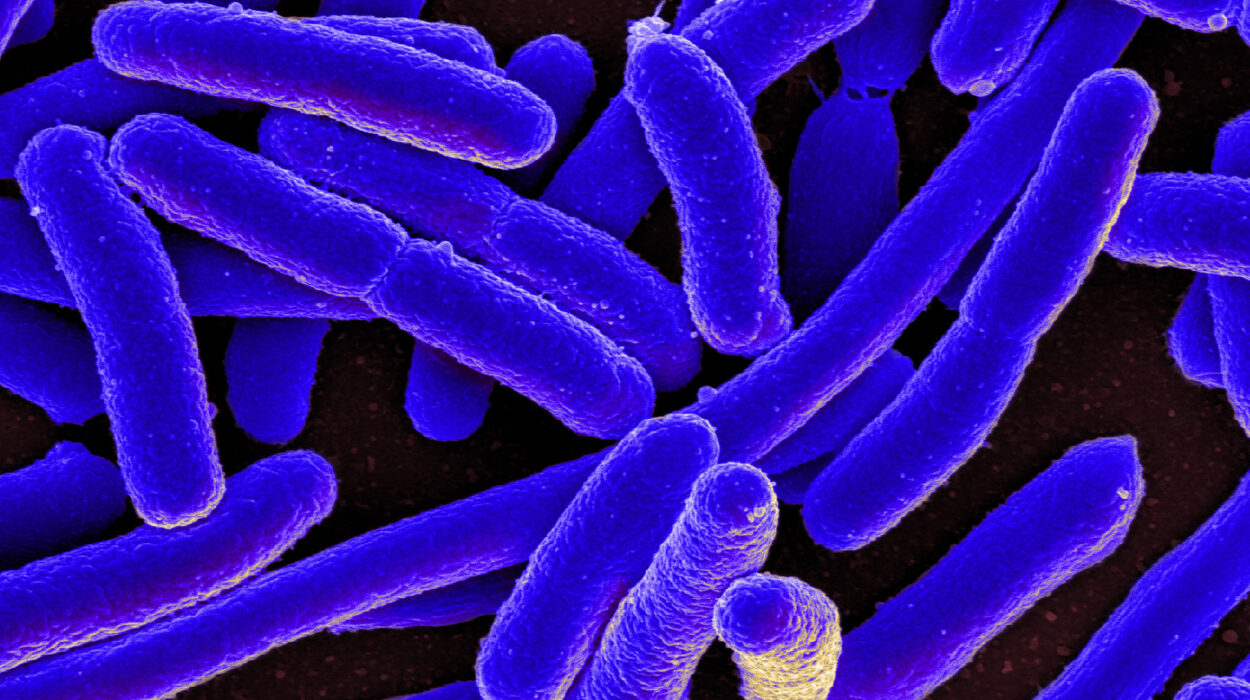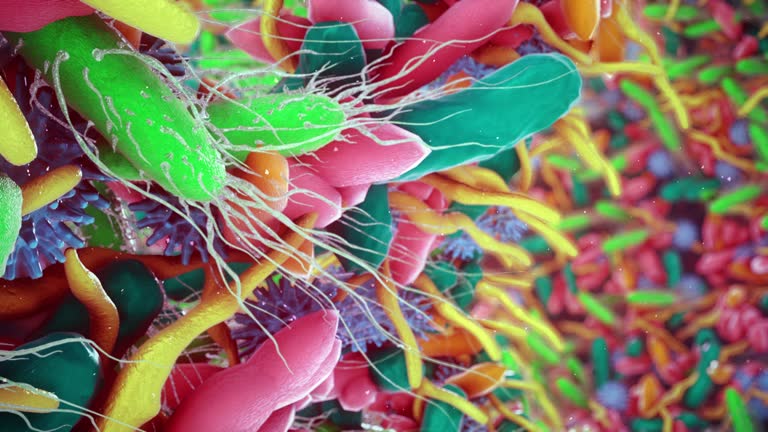In a groundbreaking study that reads like a microscopic battle saga, scientists have filmed—for the first time ever—how human and zebrafish embryos, still just days old, defend themselves from bacterial invaders. The research, published this week in Cell Host & Microbe, offers a window into the astonishing defenses already at work before the human body even begins to take shape.
Led by researchers from the Institute of Molecular Biology of Barcelona (IBMB-CSIC) and the Bellvitge Biomedical Research Institute (IDIBELL), the study reveals an ancient, elegant form of immunity—one that predates the birth of white blood cells, the immune system’s more well-known soldiers. Using cutting-edge microscopy, the team captured the embryo’s first act of self-defense: a stealthy, coordinated cellular strike against harmful bacteria.
The Secret Lives of Embryos
Until now, science had no clear idea how fragile, pre-implantation embryos—still floating outside the uterine lining and without a developed immune system—could possibly survive in the potentially hostile environment of the reproductive tract.
But what the team uncovered was nothing short of awe-inspiring: embryos come equipped with their own sentinels, right on the surface of their forming bodies. These are epithelial cells, which line the outer layer of the embryo. Far from being passive bricks in the early body wall, these cells act as tiny guardians. They move, react, and even eat—to protect their host.
Under high-powered live imaging, the scientists watched as these cells extended delicate finger-like protrusions, wrapped them around invaders like Escherichia coli or Staphylococcus aureus, and swallowed them whole in a process known as phagocytosis. It’s the same kind of microbial devouring that adult white blood cells are famous for—but in embryos, it comes from cells that weren’t previously known to be immune players at all.
“This is the first time we’ve been able to see how an embryo protects itself before implantation, before organs, before blood—before the immune system as we know it even exists,” says Dr. Esteban Hoijman, lead researcher and head of the Embryonic Cell Bioimaging lab at IBMB-CSIC and IDIBELL.
Filming the First Immune Response
Using zebrafish embryos as a model—favored in developmental biology for their transparency and rapid development—researchers employed state-of-the-art microscopy, allowing them to observe immune responses in real-time.
What they saw was not a passive process. As bacteria entered the embryonic space, epithelial cells became active agents, engulfing the bacteria through a carefully orchestrated dance of membrane movement powered by Actin, a structural protein also essential in muscle contraction and cellular mobility.
The behavior wasn’t just mechanical. These early immune-like reactions triggered gene activation linked to immunity, suggesting that the cells were doing more than cleaning house—they were signaling and coordinating, just like mature immune cells would.
Even more remarkably, when the team turned to human embryos, they found the same mechanisms at play.
“This is not just a zebrafish thing,” explains Hoijman. “We found evidence of these defense processes in human embryos as well. That tells us this is a deeply conserved, evolutionarily ancient method of self-protection.”
Immunity Before the Immune System
Traditional biology has taught that immunity kicks in only after certain cells—like macrophages or T cells—emerge from the embryonic developmental pipeline. But this study flips that assumption.
According to Hoijman, the findings suggest that the roots of our immune system may lie in these early, non-specialized cells, offering the embryo a survival mechanism during its most vulnerable phase. In this view, immunity is not just an afterthought to development, but a foundational feature of life itself.
And the implications don’t end there.
“Infections during early pregnancy are a major cause of infertility and embryonic failure,” says Hoijman. “Yet until now, we didn’t really understand how embryos respond to bacterial threats. This changes everything.”
A New Frontier in Reproductive Health
The discovery opens up entirely new pathways for thinking about reproductive medicine. If embryos already possess some capacity to fight infections, then understanding these early immune mechanisms could lead to better outcomes in in vitro fertilization (IVF), prevention of malformations, and more successful pregnancies overall.
Infections in the uterus are not uncommon and are often linked to implantation failure or miscarriage. But until now, doctors have lacked the tools or understanding to detect how these microscopic threats affect early-stage embryos—or how to help embryos respond better.
By revealing the immune strategies embryos already possess, this research may eventually help clinicians develop supportive treatments that enhance these natural defenses. There is also the possibility of targeted therapies to combat specific infections that may otherwise remain undiagnosed until it’s too late.
And beyond medicine, the study taps into an even broader mystery: how life begins to define itself as separate from its environment.
“This is really the first moment when the embryo interacts with the outside world—not just chemically, but biologically,” says Hoijman. “It’s the beginning of the embryo’s identity.”
The Battle Between Friend and Foe
But there’s another layer of complexity here. Not all bacteria in the uterus are harmful. Emerging research shows that certain microbes—like Lactobacillus—might even play beneficial roles in reproductive health. So how does the embryo distinguish between helpful and harmful bacteria?
That, say scientists, is the next big question.
“We need to learn more about the microbiome of the uterus,” Hoijman explains. “Which bacteria are normal residents? Which are invaders? How does the embryo interpret these signals?”
As researchers map out the reproductive tract’s bacterial landscape, understanding how the embryo’s primitive immune system selectively responds could be vital in separating threats from allies. This knowledge might help preserve healthy pregnancies while defending against microbial harm.
From Microscopic Footage to Macroscopic Impact
The footage captured in this study is more than just compelling science—it’s a poetic window into life’s earliest moments of resilience. Against all odds, before the heart beats, before the brain forms, before identity is even assigned—the embryo fights back.
It’s not just symbolic. It’s survival.
At a time when the very concept of immunity is at the center of global health concerns—from viruses to autoimmune diseases—this research reminds us that the story of immunity begins far earlier than we once believed. It’s a story that begins with a cell, a threat, and a choice to live.
As science continues to explore the frontiers of reproduction, development, and immunity, this study—led by a collaborative effort from IBMB-CSIC, IDIBELL, CRG Barcelona, Pompeu Fabra University, the University of Barcelona, ICREA, and others—represents a milestone.
It may take years for the full applications to emerge, but the insight is already here: even the tiniest lives are not defenseless.
Reference: Joan Roncero-Carol et al, Epithelial cells provide immunocompetence to the early embryo for bacterial clearance, Cell Host & Microbe (2025). DOI: 10.1016/j.chom.2025.05.025






